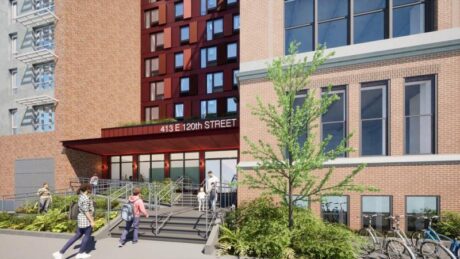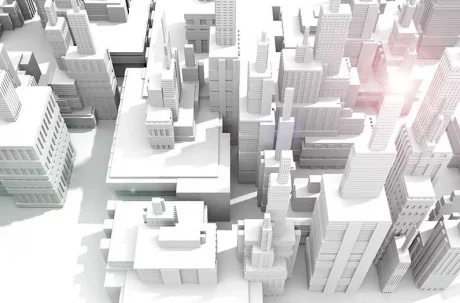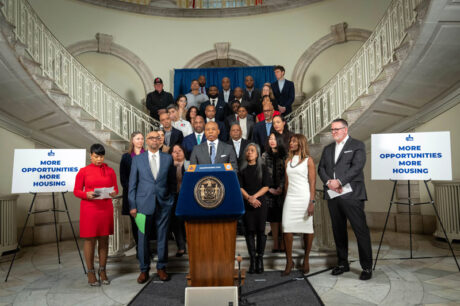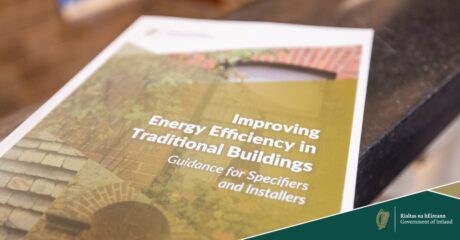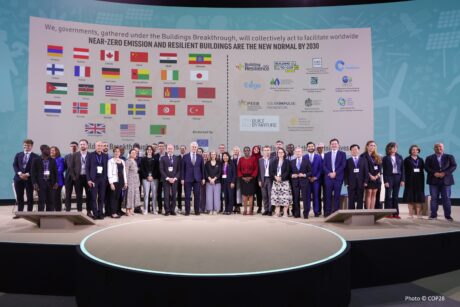We're excited to give you an inside look at the NYSERDA Empire Building Challenge project, The Heritage, a notable three-building, 680,000-square-foot development located on Madison Avenue. Originally constructed in 1974, The Heritage is undergoing a significant retrofit to usher in a sustainable future. 🏢🍃 Thanks to the collaboration with L+M Development Partners LLC and Invesco Ltd., the project is set to achieve an ambitious goal: a 54% reduction in site…
The Beacon receives NYSERDA Buildings of Excellence Award
👂Have you heard??? Our pipeline project, The Beacon is a NYSERDA Round 4 Buildings of Excellence winner! This means not only 280+ affordable, climate future-proof homes in East Harlem, but a fully-renovated multi-service center focusing on health, wellness, and economic opportunity to boot! Read More
Increasing the Supply of Affordable Housing: Economic Insights and Federal Policy Solutions
The Biden-Harris Administration believes that every American should have access to safe and affordable housing (White House 2023a). Where people live determines their available housing quality and amenities, such as labor market access, transportation options, schools, protection from crime, environmental quality, and social networks—all of which affect their quality of life and intergenerational economic mobility (Chetty and Hendren 2018). Continue Reading
The City Planning Commission just approved Green Fast Track by an 11-1 vote!
This NYC Department of City Planning initiative will help New York City build housing greener and faster by streamlining the environmental review process for small- and medium-sized residential buildings. By cutting up to two years and $100,000 of red tape, Green Fast Track will speed up the construction of much-needed housing across the city! Learn More
Mayor Adams Announces $50 Million Initiative to Reduce Barriers and Support Minority-Owned Developers to Build More Affordable Housing
March 4, 2024 Watch the video here at https://www.youtube.com/watch?v=uGpHFR7kQWo Effort Expected to Enable $500 Million in Private Construction Lending to Minority-Owned Affordable Housing Developers Through Partnership With Goldman Sachs and Community Preservation Corporation As Adams Administration Doubles Down on Commitment to Fight Housing Crisis, City Needs More Tools from Albany to Build Affordable Homes for New Yorkers NEW YORK – New York City Mayor Eric Adams, New York City Housing Preservation Development (HPD)…
New York can add affordable housing without raising taxes. Here’s how
Most agree there is a housing crisis in New York State. According to the New York State Comptroller, housing costs went up 68% in the last decade. Housing accounts for roughly 40% of total household expenses in New York City, where many residents spend on average $30,000 a year for housing. How can we all work together to address the housing crisis without raising taxes? Continue Reading
Does anyone offer higher savings?
Press Release 14 February 2024 Deep retrofit reduces heating energy consumption by more than 70 percent. Darmstadt/Germany. After a deep retrofit, a typical apartment block from the post-war era has become a model for energy-efficient buildings. The Passive House Institute conducted scientific monitoring of the project in Giessen, Germany, and has now published its research report. Read More
Decoding Efficiency: A Partel Perspective on New Government Guidelines for Energy Efficiency in Traditional Buildings
- Dara McGowan 1. Moisture Management in Traditional Buildings: A Critical Analysis Identifying driving rain as the largest single source of moisture for traditional buildings is extremely important. This is the elephant in the room when it comes to internal insulation approaches and has been highlighted as a concern by our technical team on numerous retrofit projects. While there are solutions to this problem, it is one that requires serious…
Fostering collaboration: Buildings Breakthrough
Buildings Breakthrough: “Near-zero emission and resilient buildings are the new normal by 2030.” Breakthrough Agenda context At COP26 in November 2021, 45 world leaders, whose governments collectively represent over 70% of global GDP, launched the Breakthrough Agenda, aiming at strengthening international collaboration on decarbonizing high-emitting sectors (Transport, Power, Hydrogen, Steel, and Agriculture) and making clean technologies and sustainable solutions the most affordable, accessible and attractive option in all regions by 2030.…
Grid-Interactive Efficient Buildings
The Building Technologies Office research is helping make buildings become smarter about the amount and timing of energy use and emit less carbon through the Grid-interactive Efficient Buildings (GEB) Initiative. The GEB Initiative works to remake buildings into a clean and flexible energy resources by combining energy efficiency and demand flexibility with smart technologies and communications to inexpensively deliver greater affordability, comfort, productivity, and performance to America’s homes and buildings.…
Global Status Report for Buildings and Construction
The Global Status Report for Buildings and Construction (Buildings-GSR) is a flagship publication of the UNEP-hosted Global Alliance for Buildings and Construction (GlobalABC). The Buildings-GSR provides an annual snapshot of the progress of the buildings and construction sector on a global scale and reviews the status of policies, finance, technologies, and solutions to monitor whether the sector is aligned with the Paris Agreement goals. It also provides stakeholders with evidence…
The American Climate Corps will put a new generation of Americans to work
President Biden is announcing a new initiative to train young people in high-demand skills for jobs in the clean energy economy. The American Climate Corps will put a new generation of Americans to work conserving our lands and waters, bolstering community resilience, advancing environmental justice, deploying clean energy, implementing energy efficient technologies, and tackling climate change. American Climate Corps members will gain the skills necessary to access good-paying jobs that…


